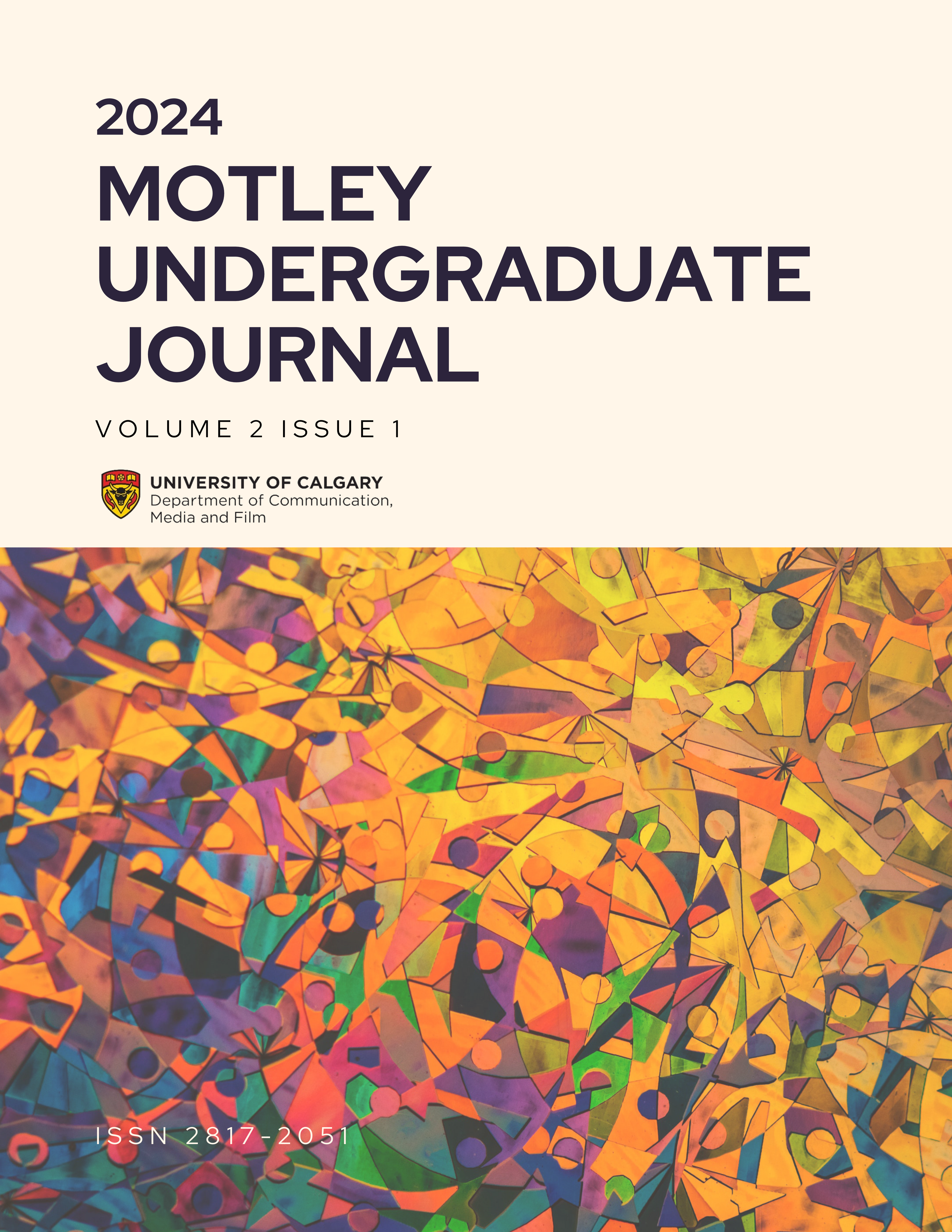A Dummy's Guide to using Instagram like a REAL Journalist
DOI:
https://doi.org/10.55016/ojs/muj.v2i1.78826Keywords:
social media, journalism, ethnography, resistanceAbstract
Journalism is an ever-growing industry. In the digital age of the 21st century, social media platforms like Facebook and Instagram (Meta) have become a place for engaging with audiences in an attempt to humanize news publications. Until the summer of 2023, social media platforms were open spaces for the accessible sharing of news. The reliance of journal publications on social media to interact with the audience not only built a boundary between personal and professional image for journalists but also made journalists’ interactions with their audiences very passive. With the changes implemented by Meta in response to Bill C-18, which took away news organizations’ accounts from their social media platforms in Canada, the process of engaging with audiences and presenting news changed to become more journalist-oriented. Furthermore, journalists participated more actively as they had to present themselves by using their personal accounts. Now that the line between professional and personal identity on social media is blurred, it provides space for discourse on how a journalist brands themselves on a platform that is silencing their work. My study investigates a local independent student news publication’s editorial board practices to observe how student journalists are resisting the news-sharing ban Meta has introduced. I found that the platform’s policy changes were mostly superficial, and loopholes were easy to find and exploit. The findings were used to make an Instagram account in the form of a guide for student journalists, documenting the process of bypassing the content-sharing ban.
References
Anderson, C. W., & Schudson, M. (2020). Objectivity, professionalism, and truth seeking. The Handbook of Journalism Studies, 136–151. https://doi.org/10.4324/9781315167497-9
Bossio, D. (2021). Journalists on Instagram: Presenting Professional Identity and Role on Image-focused Social Media. Journalism Practice. https://doi.org/10.1080/17512786.2021.2001359
Brems, C., Temmerman, M., Graham, T., & Broersma, M. (2017). Personal Branding on Twitter: How employed and freelance journalists stage themselves on social media. Digital Journalism, 5(4), 443–459. https://doi.org/10.1080/21670811.2016.1176534
Deuze, M., & Witschge, T. (2019). Beyond journalism: Theorizing the transformation of journalism. Journalism, 19(2), 165–181. https://doi.org/10.1177/1464884916688550
Goffman, E. (1959). The Presentation of Self in Everyday Life. Garden City, New York: Doubleday Anchor Books.
Mellado, C., & Hermida, A. (2021). The Promoter, Celebrity, and Joker Roles in Journalists’ Social Media Performance. Social Media and Society, 7(1). https://doi.org/10.1177/2056305121990643
Negreira-Rey, M. C., Vázquez-Herrero, J., & López-García, X. (2022). Blurring Boundaries Between Journalists and TikTokers: Journalistic Role Performance on TikTok. Media and Communication, 10(1), 146–156. https://doi.org/10.17645/mac.v10i1.4699
Nielsen, R. K., & Sarah, A. G. (2022). Platform power. In The Power of Platforms. Oxford University Press.
van Dijck, J., & Poell, T. (2013). Understanding social media logic. Media and Communication, 1(1), 2–14. https://doi.org/10.12924/mac2013.01010002
Downloads
Published
How to Cite
Issue
Section
License
Copyright (c) 2024 Daman Preet Singh

This work is licensed under a Creative Commons Attribution-ShareAlike 4.0 International License.
Copyright Policy
The Motley Undergraduate Journal is an Open Access article distributed under the terms of the Creative Commons Attribution 4.0 Share-Alike License. Under this license, users are free to share (copy, distribute and transmit) and remix (adapt) the contribution, including for commercial purposes, providing that the original work is properly cited. Under Creative Commons, authors retain copyright in their articles.
Author Self Archiving Policy
Authors are permitted to post their work online in institutional/disciplinary repositories or on their own websites. Pre-print versions posted online should include a citation and link to the final published version in The Motley Undergraduate Journal as soon as the issue is available; post-print versions (including the final publisher's PDF) should include a citation and link to the journal's website.

